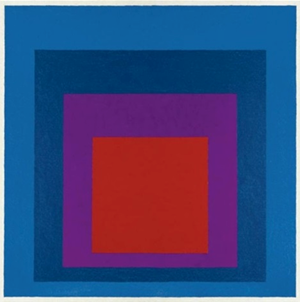
Through 34 lots, the sale on 6 October at Sotheby’s in London, will tell the story of Bauhaus that came to define arts and design the 20th Century.
Sotheby’s presents Bauhaus_Defining a Century, an auction which demonstrates the breadth of the artistic endeavour undertaken at and inspired by the Bauhaus. Comprising painting, design, photography and metallurgy the sale intends to use the interdisciplinary nature of the school to avow the importance and influence that the Bauhaus still has on visual culture today. Bauhaus_Defining a Century heralds the wave of international events planned in celebration of the forthcoming Bauhaus centennial in 2019; honouring its creativity, innovation and legacy in the 20th century and beyond. Through 34 lots, the sale on 6 October at Sotheby’s in London, will tell the story a movement that came to define arts and design the 20th Century. Auction highlights include landmark works by legendary members of the Bauhaus faculty including Wassily Kandinsky, László Maholoy-Nagy, Josef and Anni Albers, Marianne Brandt, Paul Klee, Mies van de Rohe, Marcel Breuer and Lyonel Feininger.
Walter Gropius (1883-1959) founded the German art school Staatliches Bauhaus in Weimar in 1919, now known simply as the Bauhaus. The school set out to propagate a new form of collective artistic endeavour which - through its emphasis on harmony and assimilation - might heal the world of some of the psychological damage it had wrought upon itself during the First World War. Influenced heavily by the British 19th-century Arts and Crafts movement established by William Morris, Gropius’s Bauhaus (literally translated as ‘house of building’) sought to re-establish the principles of shared learning which, like Morris, he felt had been lost; unlike Morris, however, Gropius wished to apply the principles of modern technology and design. From the outset, the Bauhaus was an innovative and revolutionary movement that pioneered a new approach to the practice of art which encompassed architecture, design, visual art and photography. Forced by political circumstance to close and reopen twice meant the school had to continuously reinvent and re-establish itself, and it’s history can be split into three phases: Weimar (1919-22), Dessau (1923-32) and Berlin (1932-33). It finally closed in 1933, under pressure from the burgeoning Nazi regime.
Forced out of Germany, many key figures of the Bauhaus emigrated to the United States, where their work and teaching philosophies influenced generations of young artists, architects and designers. Walter Gropius and Marccel Breuer became tutors at Harvard's influential design school, MoholyNagy founded the Chicago Institute of Design, while Josef and Anni Albers taught at the Black Mountain College where their students included Ruth Asawa, Robert Rauschenberg and Cy Twombly. The lasting impression of the school can also be seen in the great buildings of modern America, Gropius’ Pan Am (now MetLife) building in Manhattan alongside Mies Van der Rohe’s Seagram Building and Lake Shore apartments in Chicago celebrate the pure modernism that the Bauhaus gave to the world.
Tired of the tedious dogma of traditional German painting, Albers responded enthusiastically to the radical Bauhaus manifesto of 1919, enrolling at the institution in 1920. As a teacher first at the Bauhaus, then at Black Mountain College in North Carolina and finally at Yale University, Albers exerted his influence on many of the great names of contemporary art, bringing the theories and practices of the Bauhaus education along with him. Cy Twombly, Kenneth Noland, Ruth Asawa and Robert Rauschenberg all studied under him at Black Mountain. Bauhaus_Defining a Century brings together two works from the artist’s most iconic series. Homage to the Square: Temperate, 1957 will be offered as part of the Contemporary Art Evening Auction on 5th October, followed by Study for Homage to the Square: Coniferous in the dedicated Bauhaus sale on 6th October. Study for Homage to the Square: Coniferous stands out for its impressive provenance and exhibition history: previously owned by Jay R. Braus, an astute art collector whose esteemed collection was displayed in an exhibition at the Berkshire Museum in 2011, Study for Homage to the Square: Coniferous was subsequently gifted to the Museum of Modern Art, New York, in 1977 and remained in its collection for over 35 years.
Image above: Josef Albers, Homage to the Square: Temperate, 1957 Oil on Masonite, 81.3 by 81.3 cm Estimate: £700,000-1,000,000

ArtDependence Magazine is an international magazine covering all spheres of contemporary art, as well as modern and classical art.
ArtDependence features the latest art news, highlighting interviews with today’s most influential artists, galleries, curators, collectors, fair directors and individuals at the axis of the arts.
The magazine also covers series of articles and reviews on critical art events, new publications and other foremost happenings in the art world.
If you would like to submit events or editorial content to ArtDependence Magazine, please feel free to reach the magazine via the contact page.